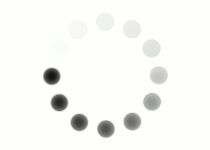To make sure you understand the different properties of color, see if you can get all the answers correct by picking the correct color swatches.
Which color square changes the value of the sample below? |

|



|
Correct! The value of a color refers to the amount of lightness or darkness it contains.
Sorry, that is not correct. The value of a color refers to the amount of lightness or darkness it contains.
Which color square changes the hue of the sample below? |

|



|
Correct! Where the color falls on the spectrum is its hue. Colors can be different hues without changing in value or intensity.
Sorry, that is not correct. Where the color falls on the spectrum is its hue. Colors can be different hues without changing in value or intensity.
Which color square gives the sample below a warmer temperature? |

|



|
Correct! Warmer color temperatures are more reddish, while cooler color temperatures shift toward blue.
Sorry, that is not correct. Warmer color temperatures are more reddish, while cooler color temperatures shift toward blue.
Which color square makes the sample below achromatic? |

|



|
Correct! Achromatic means without color, like white, black, and shades of gray.
Sorry, that is not correct. Achromatic means without color, like white, black, and shades of gray.
Complete
